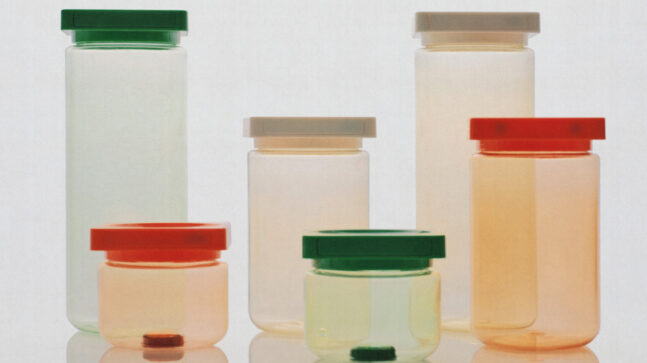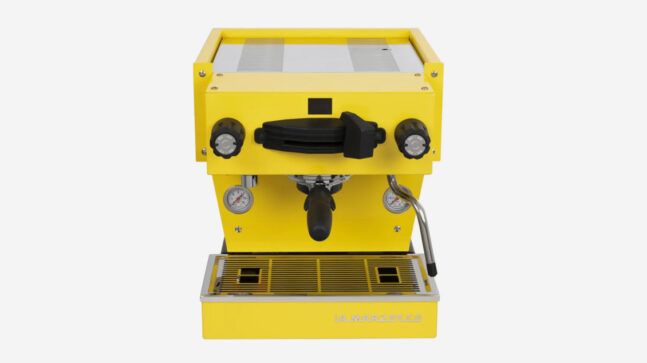One of my fellow bartenders at Wilmington Brew Works made an incredible banana foster stout and another one of us absolutely nailed an extra special bitter (ESB) a few months ago. Another homebrewer I know eyeballed a spicy lemongrass ale that defies classification but was the perfect summer beer. I’m convinced some of my friends only hang out with me to maintain steady access to my seasonal brews. I’m also absolutely not saying we would be guaranteed success if we were to let our hubris push us to open our own professional operations.
Homebrewing is a great starting point, but it does almost nothing to prepare you for the broader demands of running a production facility, regardless of the facility’s size. I myself have only recently dipped my toe into professional production as an employee at Kinnegar Brewing in Donegal, Ireland, and I’m surprised at how much I learned and how quickly I learned it.
Though that second half should come with a caveat. Everything I say in this article is based on personal experience (my three months at Kinnegar, training at Wilmington Brew Works, where I work when I’m in the United States, and my years as a homebrewer), not extensive academic study or years of business acumen. These are my own observations about commercial brewing and what surprised me coming from my homebrewing background.

Production Means Repetition, and Repetition Means Tedium
When something turns professional, it gets tedious. At Kinnegar, Scraggy Bay, the IPA that won Ireland’s first European Beer Star, is the best seller by a laughably wide margin. Scraggy’s current batch number is more than twice the next closest, and the next closest is sometimes brewed as a single batch. There’s twice as many batches of Scraggy going out in twice as much volume.
That means a hell of a lot of the same work over and over for the brewers: 12 hour shifts milling the same grains, supervising the same mash, boiling the same wort, and adding the same hops. I don’t care how deliriously in love with beer you might be, with this kind of tedium, brewing is bound to turn from a fun passion project into a normal job. And that’s just the manufacturing side of brewing. You still have to package, distribute, and clean up, all of which come with their own challenges.
The repetition doesn’t bother me enough to dissuade me from working in the industry or aspiring to open my own place. I genuinely don’t mind the actual work, which I’m not just saying because my bosses might be reading this. When the job is really moving, these have been some of the fastest work days I’ve ever experienced. But there’s always the risk of the repetition getting the best of you.
A helpful test homebrewers can do to find out if the repetition would scare them off is to get one or two of their favorite recipes and make them every single day for a week. Don’t invite friends over to help make it, don’t drink while it’s brewing, and don’t punt the cleanup to the next day. If you’re still enjoying it at the end of the week, or, maybe more accurately, you’re able to enter a sort of brewing flow state, then it’s likely you’re built for a more professional operation.

Everyone Wants to Do Brewer Shit Until It’s Time to Do Brewer Shit
That sentence is a direct quote from the head brewer at Wilmington Brew Works, and I love how succinctly it sums up the difference between what people think this job is versus what the job actually is. The brewer shit everyone enjoys is putting together recipes, mashing in, and pitching yeast. The brewer shit that makes the operation run is cleaning. Another word for that brewer shit is cellaring, which is a broad way to talk about the general support work done to keep a brewery clean and the beer happy.
Kinnegar is the larger operation I’ve worked at, so let’s take the cleaning I’ve done there as an example. Just for the fermenters, it’s required to flush out yeasty hops, sponge and foam clean (separately) the outside of all the tanks, scrub the fermenter footprint with bleach, disassemble valves and racking arms to clean them separately, and get down on all fours to scrub mildew out from the tiny spaces around the feet of the tanks. One saving grace is that Kinnegar’s facility is set up with a Clean-in-Place (CIP) system, so it’s not required to climb in the tanks to scrub the insides. Brite tanks have all the same cleaning tasks, they’re just a little easier because the really gunky stuff gets left in the fermenter during the transfer.
Besides fermenters and brites, there’s the facility itself. I’ve scrubbed the whole footprint of the brewery multiple times, soaked and scrubbed all of the hose and piping attachments in caustic cleaner, washed the outsides of kegs that just came back in disgusting condition from distributors, scrubbed hops and coconut off our portable staircase, foam cleaned walkways and the brew house, rinsed and pasteurized all of the hosing, and swept and vacuumed loose grain from the storage and milling area. That’s not an exhaustive list, but let’s leave it there for now.
I’m not the only one doing all this at Kinnegar. Everyone else is also cleaning, probably even more than me while I’m still checking our work board and asking around to see what’s supposed to be done, since most of them have been at it long enough that it’s become second nature.
Compare all of this with my homebrewing experience and you’ll see why the cleaning can get overwhelming. In homebrewing, you don’t have the same turnaround. A fermenter at a professional brewery needs to be emptied and cleaned on Tuesday so you can put a new beer in on Wednesday. Plus the equipment for homebrewing is much, much, much smaller. Homebrewing cleaning can easily, and often does, slip to a “I’ll get to it when I get to it” mentality. Before you know it, it’s been two or three days or a week or two weeks.
A bit of encouragement I can give to homebrewers making the jump is that seniority doesn’t get you out of these grunt jobs. I’m not scrubbing everything endlessly because I’m the new guy. I’m scrubbing everything endlessly because that’s what the job is. If you find yourself in a brewery where the owners or longest standing employees are constantly delegating the worst jobs, start looking for a better gig.

There’s Still Room for Homebrew-esque Experimentation
A lot of my homebrewing recipes are based on me just wanting to see what would happen if I play-acted as a witch and chucked a bunch of ingredients into a cauldron. As a quick example, one of my favorite beers I’ve ever made was when I found a big bunch of wood sorrel growing in my home garden, so I threw it in my most solid medium-bodied grist bill and stuck it in a keg. What I ended up with was a thoroughly refreshing accidental sour that closed out last year’s summer.
Before I started in production, I thought there’d be no room for that kind of experimentation. I figured everyone is making IPAs because IPAs are what’s selling. I thought it wasn’t possible to branch out because the brewery wouldn’t survive the financial hit that comes from producing a batch of experimental beer that no one buys. In my mind, it was the equivalent of a kid being stuck inside all summer with a math tutor while he watches his friends chasing each other around a playground. The homebrewers are the ones on the playground, in case that analogy got clunky.
But one of the things that attracted me to Kinnegar was that it seemed like the team is out on the playground with the rest of the homebrewers. The core range is what keeps the brewery financially afloat, but there are two separate experimental lines, Brewers at Play (BAP) and Tap Room Only (TRO), where we get to throw stuff at the wall and see what sticks. There are also seasonal lines that aren’t necessarily always the same beer. The seasonals are the safest, though never straightforward. The BAPs beers don’t follow any marketing logic and are more about what the staff is thinking about at the time. The TROs are exclusives, and are supposed to be intriguing beers that convince people to get themselves to far-flung Donegal.
For example, the Winterland release for this season is an imperial coconut stout, which is only really weird in that it’s an imperial stout that doesn’t pour and drink like motor oil. The Brewers at Play series is on its 28th iteration with a barleywine and the beer before it, number 27, is a black lager. Both are underserved styles, in my opinion. The TRO series is younger, only on its second release, but both are homebrew-esque beers that work extraordinarily well. TRO-1 is a smoked pineapple sour and tastes exactly like it sounds. TRO-2 is a coffee kelp stout that I would have made myself if I wasn’t separated from my homebrewing equipment by an ocean. I should also clarify that Cool Material is paying me for this article, not Kinnegar. I just genuinely like the BAP and TRO beers.
To me, the seasonal and experimental lines are a reassurance that good breweries never lose that sense of homebrewing fun. We all got into this because we wanted to put our own stamp on a millenia long tradition or because we wanted to get our friends drunk for cheaper. Sure, there’s a lot more cleaning involved (and it has an added level of urgency). But running a production brewery doesn’t mean you have to give all that up, you just have to be more responsible about how and when you have that fun.





